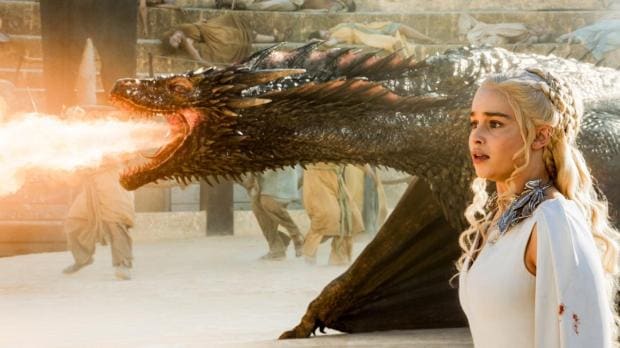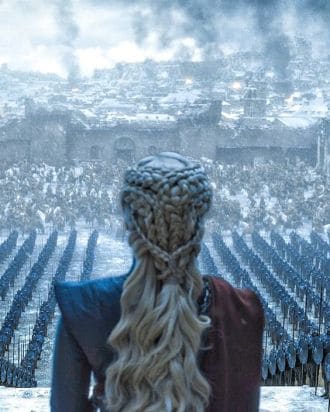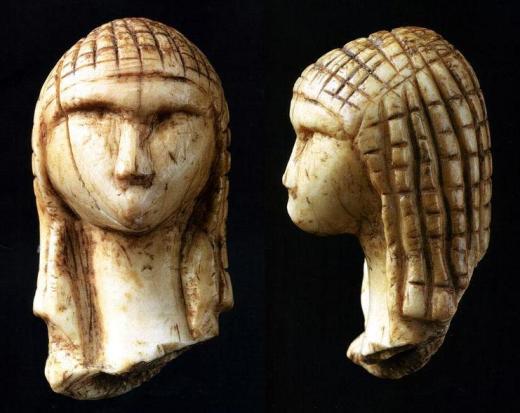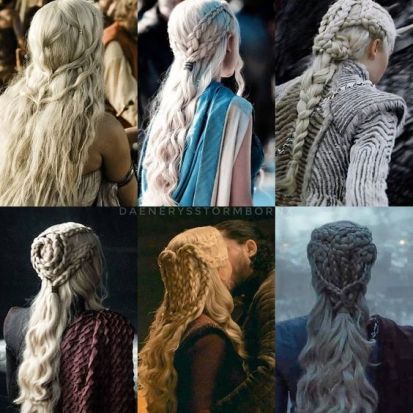If you are a GOT fan, you must have noticed the changing hairstyle and the increase in no of braids that Khaleesi Daenerys Targaryen donned. But do you know it wasn’t just a hairstyle, but it symbolised her growing power.
Throughout history, the art of hairstyling has played a crucial role in defining cultural identity and expressing personal narratives. One such form of hairstyling, braiding, has captured the attention of individuals across time and cultures. In the captivating world of Game of Thrones, Daenerys Stormborn, the Mother of Dragons, sheds light on the symbolic importance of braids.

Today, braids remain a prominent hairstyle choice for women of all ages and backgrounds. A simple YouTube search yields over a million braid tutorials, many inspired by the exquisite braids of ‘breaker of chains’, our queen. While some may embrace braids purely for their aesthetic appeal, others are drawn to the deeper cultural and historical roots behind this timeless style. Braids have become a means of celebrating diversity, connecting individuals with their ancestral heritage, and empowering women by highlighting their strength and resilience.

Ancient Origins:
Braids have been an integral part of human culture for over 30,000 years. The oldest evidence of braiding can be traced back to the Venus of Willendorf, a braided statue created between 25,000 and 30,000 BC. However, it was in African tribes that braiding flourished as an art form, with each tribe infusing its unique styles and symbolism. Intricate and ornate braids were regarded as a symbol of power, with designs varying among tribes. Ancient Egypt adorned young girls’ hair with plaits, while royalty embellished their braids with gold thread, flowers, and ribbons.

Symbolic Expressions:
Braids have held deep symbolism in various cultures. They have been seen as representations of strength, unity, and community. In many African cultures, intricate braided hairstyles known as cornrows or Fulani braids carry cultural significance, with patterns often denoting social status, age, marital status, or tribe affiliation.
In ancient Greece, braids represented wealth and social status, with intricate designs adorning delicate updos. Native Americans wore loosely braided pigtails as a symbol of strength and unity. Braids also held religious significance in many cultures, serving as a manifestation of devotion and spirituality. From the elaborate braided hairstyles of ancient civilizations to the symbolism of Native American tribes, braids have transcended superficial trends to become an expression of heritage and identity.
In Game of Thrones:
In the fantasy world of Westeros, Daenerys Targaryen, portrayed by the talented Emilia Clarke, emerges as a prominent character who highlights the importance of braids. Daenerys, known as the Mother of Dragons, often wears her silver-blonde hair in elaborate braided styles that are both visually stunning and symbolically significant.
In season 1, Khaleesi has no power hence she does not braid her hair. But cut to season 8 she starts braiding her hair and increases the number of braids as she has grown to power.

For Daenerys, her braided hairstyles reflect her journey, growth, and lineage. As she evolves from an exiled princess to a queen and a powerful leader, her braids become increasingly intricate and complex, mirroring her rise in power. Each braid weaves a tale of her resilience, determination, and connection to her ancestral roots.
Daenerys’ braids also serve as a cultural marker, reflecting the Dothraki influence in her life. The Dothraki people, fierce nomadic horse riders, value braided hairstyles as a symbol of status, skill in battle, and honor. By incorporating braids into her hair, Daenerys embraces her role as Khaleesi, or queen, of the Dothraki.
Moreover, the braids worn by Daenerys symbolize her affinity with the dragons. The intricate braided patterns often resemble the sinuous, interwoven bodies of these mythical creatures, further emphasizing her role as the Mother of Dragons.
Braids have transcended time, culture, and fiction, embodying a powerful symbolism that resonates with individuals around the world. From their ancient origins to their portrayal in popular culture like Game of Thrones, braids continue to weave stories of identity, strength, and heritage.








